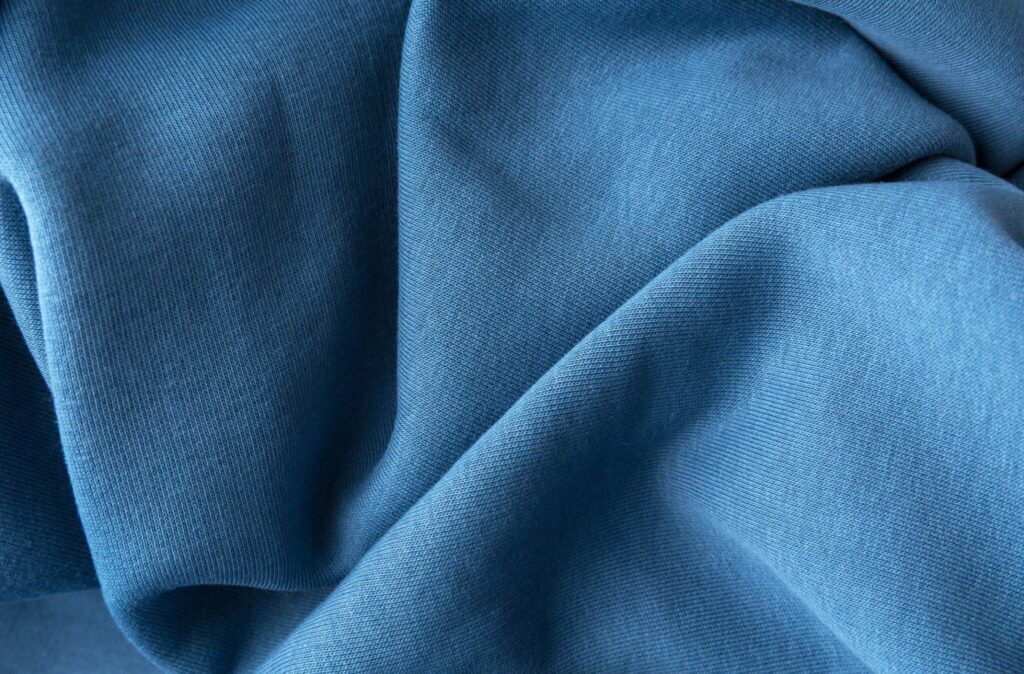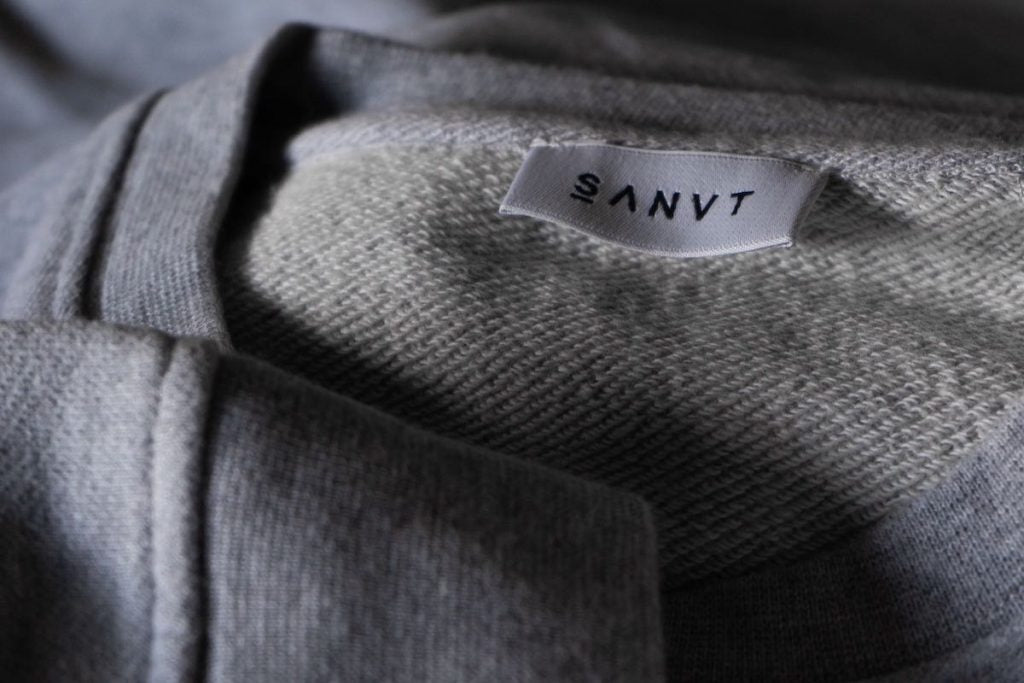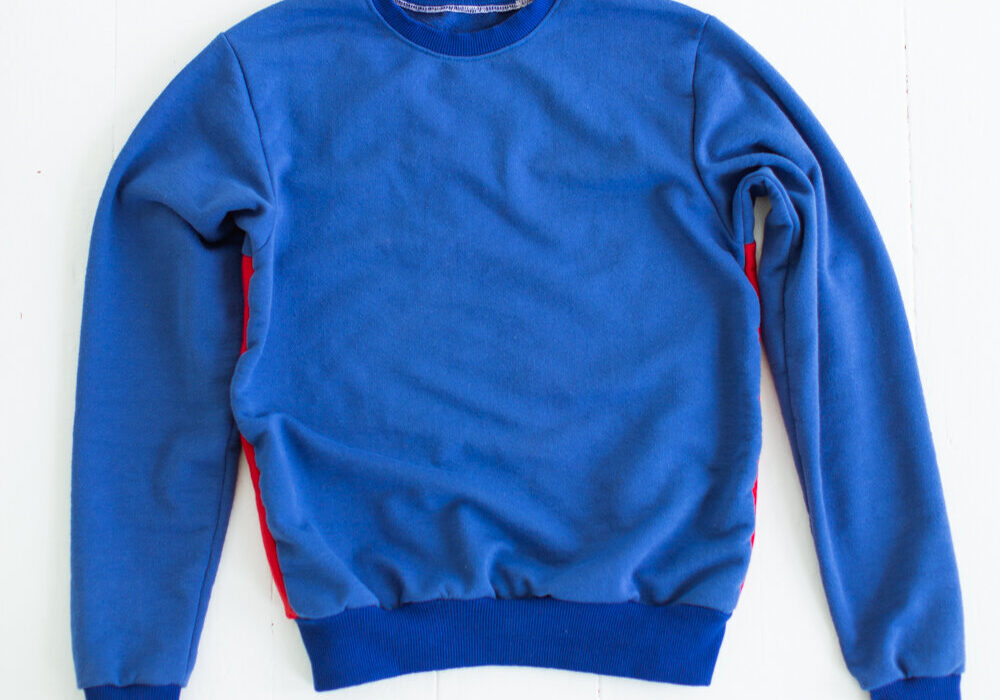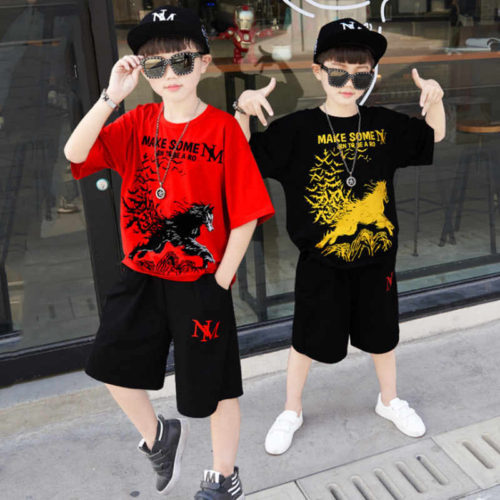Sweatshirt fabric is commonly known as fleece. It is a soft, warm material often made from cotton or polyester blends.
Sweatshirts are a staple in casual wear, providing comfort and warmth. The fabric used in sweatshirts, typically fleece, is designed to retain heat while allowing breathability. This makes sweatshirts ideal for various activities, from lounging at home to outdoor adventures.
Many people appreciate the versatility of sweatshirts, as they can be layered or worn alone. Fashion trends have also embraced sweatshirts, leading to stylish designs and unique prints. Understanding the fabric behind sweatshirts helps consumers make informed choices. Whether you’re looking for something cozy for the weekend or a trendy option for a night out, sweatshirt fabric plays a crucial role in comfort and style.
Table of Contents
The Basics Of Sweatshirt Material
Sweatshirt fabric is a popular choice for comfort and style. Many people wear sweatshirts for casual outings or lounging at home. Understanding the fabric helps in making better choices. Let’s explore the types of materials and their features.
Common Fibers Used
Sweatshirt fabric is made from a mix of fibers. Here are the most common ones:
- Cotton: Soft, breathable, and comfortable.
- Polyester: Durable, wrinkle-resistant, and quick-drying.
- French Terry: Loop knit fabric with a soft texture.
- Fleece: Warm and fluffy, ideal for colder weather.
These fibers can be blended for better performance. Cotton-polyester blends are popular for their softness and durability.
Weight And Texture Variations
Sweatshirt materials come in different weights and textures. Here are some common variations:
| Type | Weight (grams per square meter) | Texture |
|---|---|---|
| Lightweight | 200-250 | Soft and smooth |
| Midweight | 250-350 | Balanced and cozy |
| Heavyweight | 350+ | Thick and warm |
Choosing the right weight affects comfort and warmth. Lightweight fabrics are perfect for layering. Heavyweight options keep you warm in winter.
Fleece: The Warmth Provider
Fleece is a popular fabric choice for sweatshirts. It offers warmth and comfort. This soft material is perfect for chilly days. It traps heat while remaining lightweight. Fleece also has a cozy texture that many people love.
Characteristics Of Fleece
Fleece has several unique characteristics. Here are some key features:
- Softness: Fleece feels gentle against the skin.
- Insulation: It keeps you warm without being heavy.
- Breathability: Fleece allows air to circulate.
- Moisture-wicking: It pulls sweat away from the body.
- Durability: Fleece lasts through many washes.
Types Of Fleece
Many types of fleece exist. Each type has its own benefits. Here’s a quick overview:
| Type of Fleece | Description | Best For |
|---|---|---|
| Microfleece | Lightweight and soft fleece. | Layering and mild weather. |
| Polar Fleece | Thicker and warmer than microfleece. | Cold weather activities. |
| Stretch Fleece | Fleece with added elasticity. | Active wear and movement. |
| Recycled Fleece | Made from recycled plastic bottles. | Eco-friendly options. |
Choosing the right fleece depends on your needs. Each type offers unique benefits.
French Terry: The Lightweight Alternative
French Terry stands out as a popular fabric choice. It offers comfort without the heaviness of traditional fleece. This makes it ideal for casual wear and workouts. Let’s explore what makes French Terry unique.
What Makes French Terry Unique
French Terry is a knit fabric with loops on one side. The other side is smooth, providing softness against the skin. Here are some key features:
- Breathable: Keeps you cool during activities.
- Lightweight: Perfect for layering without bulk.
- Stretchy: Allows for easy movement.
- Absorbent: Great for sweat management.
French Terry Vs. Traditional Fleece
Understanding the differences between French Terry and fleece is essential. Here’s a quick comparison:
| Feature | French Terry | Traditional Fleece |
|---|---|---|
| Weight | Lightweight | Heavier |
| Texture | Smooth on one side | Soft and fluffy on both sides |
| Breathability | Highly breathable | Less breathable |
| Best Use | Layering and workouts | Warmth and lounging |
Both fabrics have their benefits. Choose French Terry for lightweight comfort. Opt for fleece when you need extra warmth.
Jersey: The Versatile Fabric
Jersey fabric is a popular choice for sweatshirts. It offers comfort and flexibility. This fabric is known for its soft texture and stretchability. Understanding jersey helps you choose the right sweatshirt.
Identifying Jersey Material
Jersey material has distinct features. Here’s how to recognize it:
- Softness: Jersey feels smooth against the skin.
- Stretch: It easily stretches in all directions.
- Weight: Jersey is lightweight and breathable.
- Knitted Texture: It has a unique knit pattern.
To test jersey, look for its flexibility. A simple stretch will show its ability to return to shape. This quality makes jersey great for active wear.
Jersey In Sweatshirt Production
Jersey plays a crucial role in sweatshirt production. Many manufacturers prefer it for several reasons:
| Benefit | Description |
|---|---|
| Comfort | Jersey provides a cozy wearing experience. |
| Durability | It holds up well after many washes. |
| Versatility | Works well for various styles and fits. |
| Easy Care | It is easy to clean and maintain. |
Jersey sweatshirts are perfect for casual wear. They suit all seasons. The fabric adapts to different designs, from hoodies to crewnecks.
The Rise Of Synthetic Blends
The popularity of synthetic blends in sweatshirt fabric has surged. These materials offer comfort, durability, and versatility. They combine the best qualities of natural and synthetic fibers. As fashion evolves, synthetic blends meet modern needs.
Advantages Of Synthetic Materials
- Durability: Synthetic fabrics resist wear and tear.
- Moisture-Wicking: They draw sweat away from the body.
- Lightweight: Synthetic blends are often lighter than cotton.
- Quick-Drying: These materials dry faster after washing.
- Color Retention: They hold dyes better, preventing fading.
- Affordability: Synthetic blends are usually less expensive.
Popular Synthetic Blends
| Blend Type | Main Fiber | Common Uses |
|---|---|---|
| Polyester-Cotton | Polyester | Casual sweatshirts, sportswear |
| Nylon-Spandex | Nylon | Activewear, fitted styles |
| Rayon-Polyester | Rayon | Fashion sweatshirts, lightweight designs |
| Fleece Blends | Polyester | Warm, cozy sweatshirts |

Credit: www.sewdiy.com
Cotton: The Classic Choice
Cotton is the most popular fabric for sweatshirts. It offers comfort and warmth. Many people choose cotton because it feels soft against the skin. This classic fabric is also breathable, making it ideal for various weather conditions.
Benefits Of Cotton Sweatshirts
Cotton sweatshirts provide numerous advantages:
- Softness: Cotton is gentle and comfortable to wear.
- Breathability: It allows air to circulate, keeping you cool.
- Durability: Cotton can withstand regular wear and tear.
- Easy to Clean: Cotton is machine washable and dries quickly.
- Hypoallergenic: Ideal for sensitive skin, reducing irritation.
- Variety: Available in many colors and styles.
Cotton Varieties In Sweatshirts
Different types of cotton used in sweatshirts include:
| Type of Cotton | Description |
|---|---|
| Combed Cotton | Soft and smooth, ideal for high-quality sweatshirts. |
| Organic Cotton | Grown without pesticides, eco-friendly option. |
| Pima Cotton | Luxurious feel with long-lasting durability. |
| French Terry | Soft looped fabric, perfect for lightweight sweatshirts. |
Cotton remains a top choice for sweatshirts. It combines comfort and style effortlessly.
Wool: For Colder Climates
Wool is an excellent fabric choice for colder climates. It provides warmth and comfort. This natural fiber is known for its insulating properties. Many people prefer wool for its ability to regulate temperature.
Merino Wool In Activewear
Merino wool is a popular choice for activewear. It is soft, lightweight, and breathable. Here are some key benefits:
- Temperature Regulation: Keeps you warm in cold weather.
- Moisture Wicking: Draws sweat away from the skin.
- Odor Resistance: Reduces body odor during workouts.
- Durability: Holds up well against wear and tear.
Merino wool is ideal for outdoor activities. It works well for hiking, skiing, and running. Many brands now incorporate merino wool in their clothing lines.
Blending Wool For Comfort And Durability
Blending wool with other fibers enhances its properties. Common blends include:
| Blend Type | Benefits |
|---|---|
| Wool and Polyester | Improves durability and reduces shrinkage. |
| Wool and Cotton | Increases softness and breathability. |
| Wool and Acrylic | Enhances warmth and lightness. |
These blends create fabrics that are comfortable and long-lasting. They provide the benefits of wool while enhancing performance.
Sweatshirt Knits And Their Properties
Sweatshirt fabric plays a vital role in comfort and style. Understanding sweatshirt knits helps in making the right choice. Each knit type has unique properties that affect feel and durability.
Understanding Knit Patterns
Sweatshirt fabrics use different knit patterns. These patterns impact stretch, warmth, and breathability. Here are some common sweatshirt knit patterns:
| Knit Pattern | Properties |
|---|---|
| French Terry | Soft, lightweight, and absorbent |
| Fleece | Thick, warm, and cozy |
| Interlock | Durable, smooth, and stretchy |
| Jersey | Lightweight, breathable, and stretchy |
Each pattern suits different styles and purposes. Choose wisely for your sweatshirt needs.
Choosing The Right Knit For Your Sweatshirt
Selecting the right knit can enhance comfort. Consider these factors:
- Climate: Choose thicker knits for cold weather.
- Activity: Opt for stretchy knits for active wear.
- Style: Match the knit to your fashion preference.
Here’s a simple guide to help you:
- Identify your primary use for the sweatshirt.
- Consider the season and temperature.
- Look for fabric that feels good on your skin.
Understanding these factors makes choosing the right knit easy. Your sweatshirt can be both stylish and comfortable.
Innovations In Sweatshirt Fabrics
Recent advancements in sweatshirt fabrics have transformed comfort and style. Manufacturers now prioritize sustainability and performance. These innovations enhance durability and fashion appeal.
Eco-friendly Options
Eco-conscious consumers drive demand for sustainable sweatshirt materials. Brands now use recycled and organic fabrics. Here are some popular eco-friendly options:
- Recycled Polyester: Made from plastic bottles, reducing waste.
- Organic Cotton: Grown without harmful pesticides or chemicals.
- Bamboo Fabric: Naturally renewable and biodegradable.
These materials not only help the environment but also offer great comfort. Many brands highlight their eco-friendly practices to attract conscious buyers.
High-tech Sweatshirt Fabrics
Technology reshapes sweatshirt fabrics, improving functionality and performance. High-tech fabrics offer numerous benefits:
| Fabric Type | Benefits |
|---|---|
| Moisture-Wicking | Keeps you dry by pulling sweat away from the skin. |
| Thermal Regulating | Maintains body temperature in different climates. |
| Anti-Odor | Prevents unpleasant smells, even after long wear. |
High-tech fabrics enhance performance for athletes and everyday wearers. They provide comfort during any activity. Sweatshirts now combine style, sustainability, and technology.
How Fabric Influences Sweatshirt Function
Fabric choice plays a vital role in sweatshirt function. The right material affects comfort, warmth, and durability. Different fabrics serve various purposes, from athletic performance to casual style.
Athletic Vs. Casual Wear
Choosing the right fabric depends on the intended use. Athletic sweatshirts often prioritize performance and breathability. Casual sweatshirts focus more on comfort and style.
| Feature | Athletic Wear | Casual Wear |
|---|---|---|
| Fabric Type | Moisture-wicking blends | Cotton or fleece |
| Breathability | High | Moderate |
| Durability | High | Variable |
| Style | Functional | Trendy |
Athletic sweatshirts often use polyester or spandex. These materials wick away sweat and dry quickly. They keep athletes comfortable during workouts. Casual sweatshirts usually feature cotton or fleece. These fabrics provide warmth and softness for everyday wear.
Seasonal Considerations For Fabric Choice
The season also influences fabric selection. Different weather conditions require different materials. Here’s a quick overview:
- Spring: Lightweight cotton for breathability.
- Summer: Moisture-wicking fabrics to stay cool.
- Fall: Mid-weight fleece for warmth.
- Winter: Heavyweight fleece or wool for insulation.
Seasonal changes affect comfort levels. Choosing the right fabric helps maintain comfort throughout the year. Keeping warm in winter and cool in summer is essential.
Caring For Your Sweatshirt
Taking care of your sweatshirt keeps it looking fresh and new. Proper care extends its life and maintains its comfort. Sweatshirt fabric, often made from cotton or fleece, requires specific handling. Here are some important tips for keeping your favorite sweatshirt in great shape.
Laundry Tips For Longevity
Follow these laundry tips for your sweatshirt:
- Wash in Cold Water: Cold water protects colors and fabric.
- Use a Gentle Cycle: A gentle cycle prevents wear and tear.
- Turn Inside Out: This helps protect the outer surface from fading.
- Avoid Fabric Softener: It can break down the fabric fibers.
- Air Dry: Hang your sweatshirt to dry instead of using a dryer.
Stain Removal And Fabric Care
Stains happen, but quick action helps. Follow these steps for effective stain removal:
- Blot the Stain: Use a clean cloth to blot, not rub.
- Apply Mild Detergent: Use a small amount directly on the stain.
- Let it Sit: Allow the detergent to sit for 5-10 minutes.
- Rinse with Cold Water: Rinse thoroughly to remove detergent.
- Wash as Usual: Follow the laundry tips mentioned above.
For tough stains, consider these options:
| Stain Type | Recommended Treatment |
|---|---|
| Grease | Sprinkle baking soda, let sit, then wash. |
| Ink | Apply rubbing alcohol, blot, then wash. |
| Food | Use dish soap, rinse, then wash. |
Following these tips ensures your sweatshirt stays cozy and stylish. Regular care keeps it ready for any occasion.

Credit: affixapparel.com
The Future Of Sweatshirt Materials
The future of sweatshirt materials is exciting and innovative. New technologies and sustainable practices are changing how we create fabrics. Designers and brands are exploring various options. They aim for comfort, style, and eco-friendliness.
Emerging Trends In Textiles
Several trends are shaping the future of sweatshirt materials. Here are some noteworthy developments:
- Smart Fabrics: These materials adapt to temperature and moisture. They enhance comfort and performance.
- Recycled Materials: Brands use plastic bottles and textiles. This helps reduce waste.
- Bio-based Fabrics: Innovations include fabrics made from plants. These materials are biodegradable.
- 3D Knitting: This technique creates seamless sweatshirts. It reduces fabric waste and allows for customization.
Sustainable Practices In Fabric Manufacturing
Sustainability is crucial in sweatshirt production. Many brands adopt eco-friendly practices. Here are some common methods:
| Practice | Description |
|---|---|
| Water Conservation | Using less water in fabric production. |
| Natural Dyes | Employing plant-based dyes instead of chemicals. |
| Ethical Sourcing | Choosing materials from fair trade suppliers. |
| Energy Efficiency | Utilizing renewable energy in manufacturing. |
These practices help reduce the environmental impact. Consumers increasingly prefer sustainable options. The future of sweatshirt fabrics will focus on responsibility.
Choosing The Perfect Sweatshirt
Finding the right sweatshirt is essential for comfort and style. The fabric plays a big role in how a sweatshirt feels and looks. Knowing the different types of sweatshirt fabric helps in making the best choice.
Comfort And Style Considerations
Comfort and style are key factors in choosing a sweatshirt. A great sweatshirt should feel soft and cozy. It should also fit well and match your personal style. Here are some things to think about:
- Fabric type: Choose a fabric that feels good against your skin.
- Fit: Consider whether you want a loose or fitted sweatshirt.
- Color and design: Pick colors and patterns that reflect your style.
- Occasion: Think about when and where you will wear it.
Guide To Selecting The Right Fabric
Different fabrics offer various benefits. Here’s a simple guide to help you choose:
| Fabric Type | Benefits | Best For |
|---|---|---|
| Cotton | Soft, breathable, and durable | Everyday wear |
| Polyester | Wrinkle-resistant and quick-drying | Active use |
| Fleece | Warm and cozy | Cold weather |
| Blend | Combines the benefits of different fabrics | Versatile use |
Consider your needs before making a choice. Each fabric type serves a purpose. A well-chosen sweatshirt enhances both comfort and style.

Credit: sanvt.com
Frequently Asked Questions
What Materials Are Used In Sweatshirt Fabric?
Sweatshirt fabric typically consists of cotton, polyester, or a blend, providing comfort and warmth.
Is Sweatshirt Fabric Breathable?
Yes, sweatshirt fabric is breathable, allowing air circulation while keeping you warm.
How Is Sweatshirt Fabric Made?
Sweatshirt fabric is made by knitting or weaving fibers, often brushed for softness and warmth.
Can Sweatshirt Fabric Shrink In The Wash?
Yes, sweatshirt fabric can shrink if washed in hot water or dried on high heat.
Conclusion
Understanding sweatshirt fabric is essential for making informed clothing choices. From fleece to French terry, each type offers unique benefits. Whether for comfort or style, knowing the fabric helps you select the perfect sweatshirt. Embrace the variety and find the one that suits your needs best.
Happy shopping!







